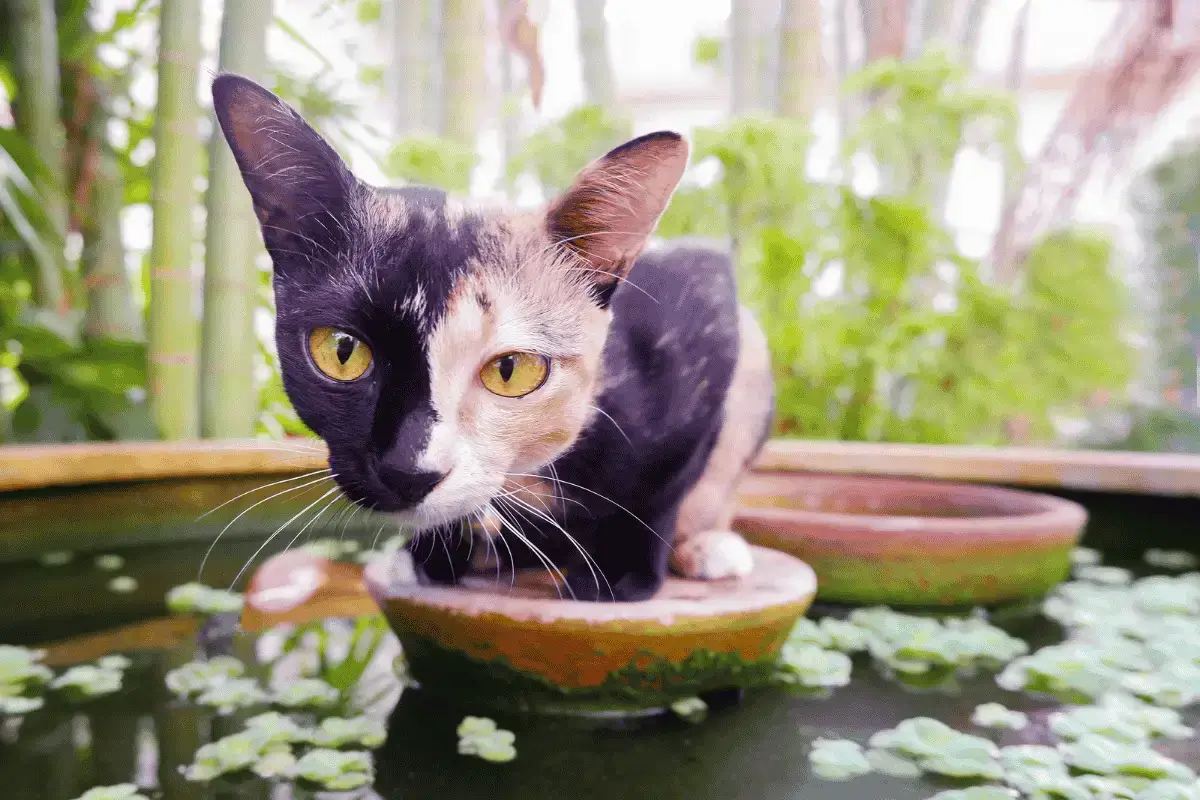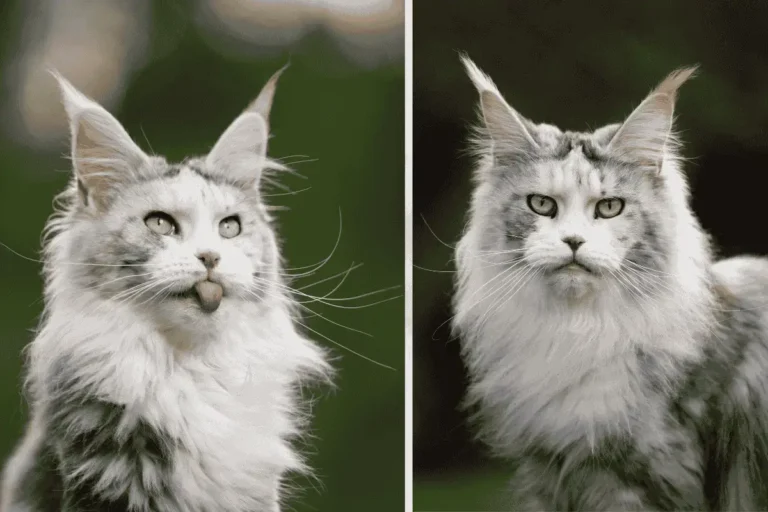Chimera Cats 101: Everything You Need to Know
Ever seen a cat with a face that looks like it’s split in half? Each side has a different color pattern. This is a chimera cat, a rare genetic wonder that has won the hearts of many cat lovers. But what makes them unique, and how do they differ from regular cats? Let’s explore the fantastic world of these unique felines.
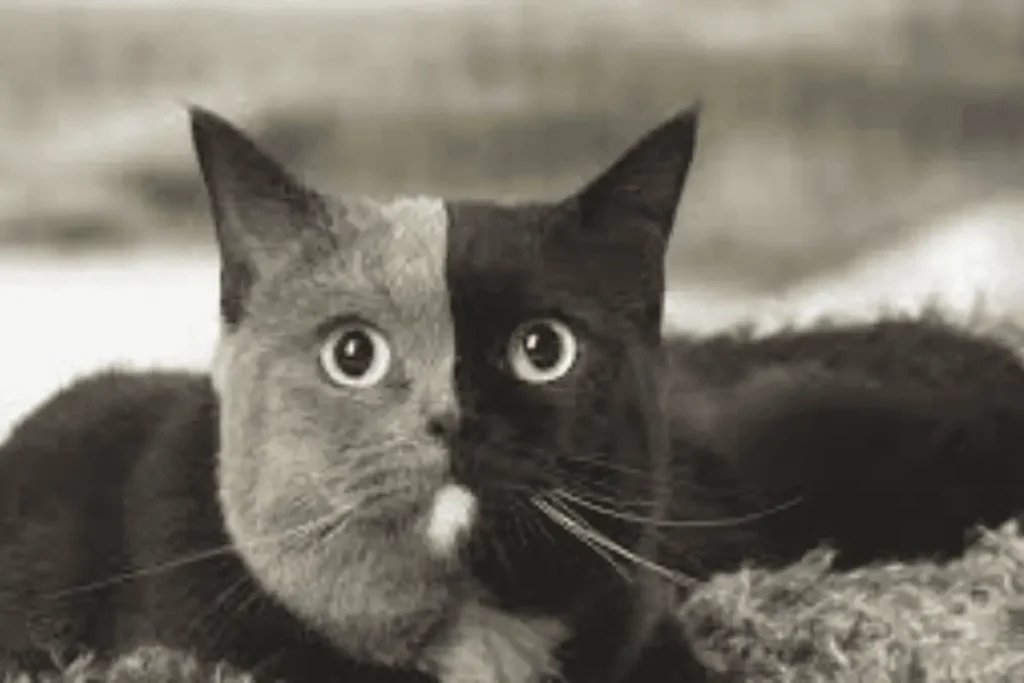
Chimera cats come from a rare genetic condition. They are made up of cells from two different fertilized eggs. This means their bodies are a mix of two different genetic sets, leading to their striking looks. They can have split-face color patterns and unique eye colors, making them true genetic marvels.
Key Takeaways
- Chimera cats are the result of a rare genetic condition where a single individual is composed of cells from two distinct zygotes.
- Chimera cats are characterized by their striking and often asymmetrical appearance, including split-face color patterns and captivating eye colors.
- Chimera cats are a rare genetic wonder that has charmed cat lovers everywhere.
- Understanding the science behind chimera cats can provide insights into the remarkable diversity of feline genetics.
- Caring for a chimera cat may require specialized considerations, such as grooming, health, and dietary needs.
Understanding Chimera Cats: A Genetic Marvel
Chimeric cats, or chimera cats, are rare and fascinating in the feline world. They come from an unusual process where two embryos merge early in pregnancy. This creates a cat with two distinct DNA sets. Such cats show unique physical traits that make them stand out.
What Makes a Cat Chimeric
The birth of a chimera cat starts with two zygotes joining early in development. This union forms a single being with DNA from both embryos. This makes each chimera cat a unique individual with a mixed look.
The Science Behind Split-Face Patterns
Chimera cats are known for their “split-face” look, where each side of the face is different. This is due to the cat’s genetic makeup. Each side of the face shows the genetic traits from one of the original embryos.
Genetic Composition and DNA Uniqueness
Chimera cats have two distinct DNA sets in one body. This genetic mix can show in many ways, like split faces or unique fur colors. Their rarity makes them extraordinary marvels in the feline world.
| Characteristic | Explanation |
|---|---|
| Rarity | Chimera cats are a rare genetic anomaly, with a small percentage of cats being chimera. |
| Genetic Composition | The genetic makeup of chimera cats results from two separate embryos combining in the womb during gestation, leading to two sets of genetic codes in one organism. |
| Split-Face Patterns | Chimera cats with a “split” face, displaying two different colored halves, are considered easily recognizable chimeras, though not all chimera cats exhibit this feature. |
| Health Considerations | Chimera cats generally do not have health complications related to having dual genetic codes and have a similar life expectancy to other cats of their breed. |
“Chimera cats are a true genetic marvel, showcasing the incredible diversity and resilience of the feline species.”
The Origins and History of Chimeric Felines
The world of chimera cats is full of mystery and history. These cats have split-face patterns and genetic duality. They’ve sparked fascination among both cat enthusiasts and scientists alike.
The word “chimera” comes from Greek myths. It describes a creature with a lion’s body, a goat’s head, and a serpent’s tail. In cat terms, a chimera is a cat made from two embryos. This results in a cat with traits from both original cats.
Scientists first noticed chimera cats in the mid-20th century. This was thanks to new genetic tests and DNA analysis. These tests showed that chimera cats can have two blood types. This proves their genetic makeup is more complex than their looks.
- Tetragametic Chimerism happens when two ova are fertilized by two sperm. This creates an organism with mixed cell lines.
- Microchimerism is when a small number of cells from another individual are present. It’s linked to some autoimmune diseases.
- Germline chimerism is when an organism’s germ cells are not its own. This is seen in marmosets with reproductive cells from their twin siblings.
As we learn more about chimera cats, we see their genetic complexity. They are a vital area of study. They show us how adaptable and resilient cats can be.
“Chimera cats are a genetic marvel, showcasing the extraordinary diversity and adaptability within the feline species.”
| Phenomenon | Description |
|---|---|
| Symbiotic Chimerism | Occurs naturally in anglerfish, where males fuse with females, eventually morphing into a hermaphroditic individual consuming the male in the process. |
| Chimerism in Marine Sponges | One individual can exhibit four distinct genotypes, functioning independently in reproduction but acting as a single unit for ecological responses. |
| Chimerism in Yellow Crazy Ants | Queens have a different genotype than sterile female workers, while males display a chimera genotype. |
The history and ongoing study of chimera cats are fascinating. They are a vital part of feline genetics. As we learn more, we’ll discover more about their genetic diversity and adaptability.
Physical Characteristics of Chimera Cats
Chimera cats are a wonder of nature, with unique physical traits. They come from two eggs merging into one, creating a cat with two DNA sets. This leads to unique split-face color patterns, eye color changes, and special coat textures.
Split-Face Color Patterns
Chimera cats have split-face color patterns that stand out. They can have two different fur colors on their face, creating a striking contrast. This color difference comes from the two embryos merging, each with its genes.
Eye Color Variations
These cats also show eye color variations, with each eye possibly being a different color. This is due to their genetic mix-up. The cells that decide eye color can end up with different pigments, creating this eye-catching effect.
Coat Textures and Markings
Chimera cats have unique coat textures and markings. The mix of two embryos can result in different fur types and patterns. They might have smooth fur next to thicker, coarser fur, making them visually stunning.
The rarity of split face cat and cat chimera pattern fascinates many. Learning about their genetic
How to Identify a True Chimera Cat
Chimera cats are a rare genetic wonder. Not every cat with unique colors is a true chimera. To spot a true chimera, you need to know the visual and genetic signs that set them apart.
One key sign of a chimera cat is their split-face pattern. True chimeras show a clear split down the middle of their face. Each side has a different color, thanks to two distinct cell lines from early development.
- Look for cats with an uneven, asymmetrical facial color pattern that doesn’t follow the typical symmetrical markings of other cat breeds.
- Observe the cat’s eyes, as chimeras may have irises of different colors, a phenomenon known as heterochromia.
- Examine the cat’s coat, which may feature a unique patchwork of different colors and textures, reflecting the underlying genetic diversity.
While visual signs can hint at a cat being a chimera, only DNA testing can confirm it. Veterinarians and researchers use DNA analysis to check if a cat has two distinct genetic profiles, proving true Chimerism.
| Characteristic | True Chimera Cat | Regular Calico Cat |
|---|---|---|
| Facial Color Pattern | Asymmetrical, clearly divided | Symmetrical, follows breed patterns |
| Eye Color | Heterochromia (different colored irises) | Consistent eye color |
| Coat Texture and Markings | Unique patchwork of colors and textures | Typical breed-specific coat patterns |
| Genetic Composition | Two distinct DNA profiles | Single DNA profile |
Knowing these differences helps you spot a truly identified chimera cat. It lets you appreciate their unique genetic makeup.
“Chimera cats are a true marvel of nature, highlighting the incredible complexity and adaptability of the feline genome.”
Chimera Cats vs Regular Calico Cats: Key Differences
Calico cats and chimera cats may look similar at first. But they have apparent differences. Knowing these differences helps us appreciate these amazing cats more.
Pattern Distribution
Calico cats have a tricolor coat with orange, black, and white patches. The white can cover 25% to 75% of their coat. Chimera cats, however, have colors that don’t follow a regular pattern. They often show a split-face or split-body look.
Genetic Testing Methods
Genetic tests are the best way to tell a calico cat from a chimera cat. Calico cats get their colors from X-chromosome inactivation. Chimera cats, though, come from two cell lines that merged early in their development. This makes them genetically unique.
Visual Identification Guide
Calico cats usually have a symmetrical pattern with clear patches. Chimera cats have more irregular and asymmetrical colors. They might even have different eye colors or fur textures on each side of their body.
Learning about chimera cats and their differences from calico cats is fascinating. It shows us the fantastic genetic diversity and beauty of these cats.rences from calico cats is fascinating. It shows us the amazing genetic diversity and beauty of these cats.
Common Myths and Misconceptions About Chimeric Cats
Chimera cats are known for their unique split-face patterns and genetic makeup. They have captured the hearts of many. But, these cats are often misunderstood. Let’s look at the facts and clear up common myths about them.
Many think chimera cats are scarce. While they are uncommon, they are not as rare as some think. Research shows natural Chimerism is more common than believed. It has been found in various species, including humans.
Some believe chimera cats act differently. But they are just like any other cat in terms of behavior and temperament. They are a result of a natural genetic event and don’t have any special powers.
Lastly, some think chimera cats are sickly or don’t live long. This is not true. With proper care, chimera cats can live as long and healthy as any other cat. Their unique genetics don’t make them more prone to health problems.
| Myth | Fact |
|---|---|
| Chimera cats are extremely rare. | Natural chimerism is more common than generally believed, and cases have been documented in various species. |
| Chimera cats have unusual behavioral traits. | Chimera cats exhibit the same temperament and behaviors as non-chimeric cats. |
| Chimera cats are inherently sickly or have shorter lifespans. | Chimera cats, when properly cared for, can live just as long and healthy lives as other domestic cats. |
By clearing up these myths, we can truly appreciate chimera cats. They show us the wonders of genetic diversity and the complexity of life.
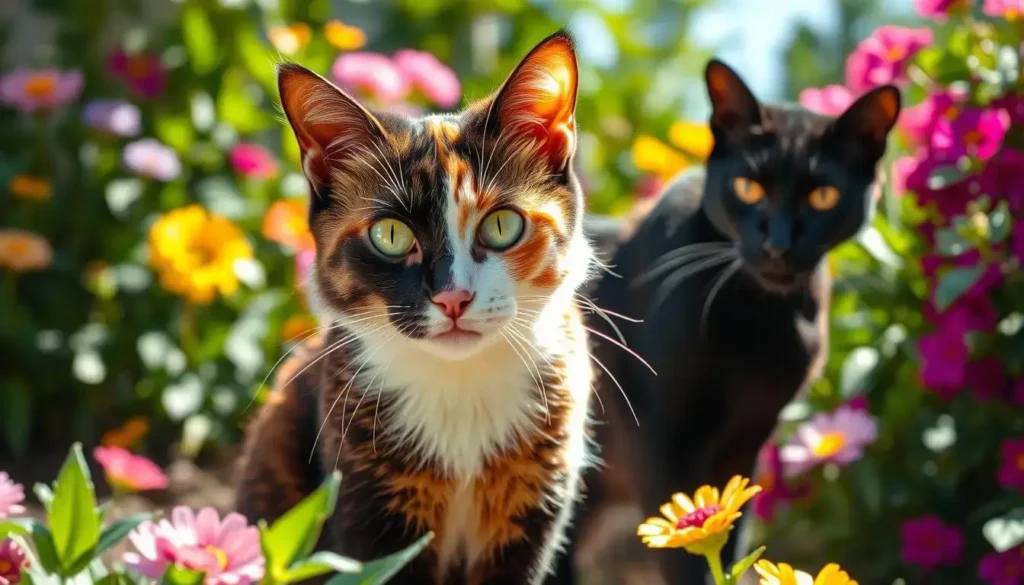
“Chimerism is a fascinating example of natural genetic variation, and it has important implications for our understanding of biology and medicine.”
Caring for Your Chimera Cat: Essential Tips
Owning a chimera cat is a unique and rewarding experience. It requires special care and attention. From grooming to health, caring for your chimera cat needs a unique approach. Let’s look at the essential tips for the best care for your chimera cat.
Grooming Requirements
Chimera cats have unique coat textures and patterns. This makes grooming more complex. Regular brushing is vital to prevent matting and keep their fur in good shape. Use a gentle, pH-balanced shampoo when bathing to keep their coat’s natural oils.
Health Considerations
Chimera cats have the exact health needs as other cats, but their genetic makeup is unique. Regular vet visits are essential to watch for any health issues. Talk to your vet about any concerns to keep your chimera cat healthy.
Dietary Needs
It’s crucial to feed your chimera cat a balanced and nutritious diet. Choose a high-quality cat food diet that meets their nutritional needs. Your vet can help determine the correct food amounts and schedule based on your cat’s age and activity level.
Understanding your chimera cat’s unique care needs is critical to their health and happiness. With the proper care, your chimera cat can live a long and healthy life. Celebrate their unique beauty and personality with extra attention and the right approach.
| Grooming Needs | Health Considerations | Dietary Recommendations |
|---|---|---|
| Regular brushing Gentle, pH-balanced shampoo Attention to both coat textures | Regular veterinary check-ups Monitoring for potential genetic-related issues Discussing any concerns with your vet | High-quality cat food Appropriate portion sizes Feeding schedule based on individual needs |
By following these vital tips, you can ensure your chimera cat gets the care they need. Remember, every cat is unique, and your chimera cat’s needs may be different. Tailor your care to help them reach their full potential.
Famous Chimera Cats in Social Media
In the world of feline social media, a few chimera cats have won millions of hearts. These cats have striking split-face patterns and mesmerizing eye colors. They are true stars, showing us the wonders of genetic diversity.
Bruce, a Minuet cat, is one such celebrity. He has a split-face pattern and different-colored eyes. His unique look has made him famous, with over 8,000 views on social media.
Quimera is another famous cat, with 63,000 followers on Instagram. Her feed is full of photos and videos that show off her striking appearance. But, some experts think she might not be a true chimera but a calico cat.
Venus is also well-known for her split-face coloration. Like Quimera, her genetic makeup is debated. Some question if she is a true chimera or just a calico cat.
These social media cats entertain millions and spark conversations about feline genetics. They show the incredible diversity in the feline world. As famous chimera cats continue to fascinate us, their stories remind us of nature’s wonders and our fascination with these unique felines.
| Cat’s Name | Social Media Followers | Genetic Classification |
|---|---|---|
| Bruce | 8,343 post views | Classified as a Minuet chimera |
| Quimera | 63,000 Instagram followers | Debated as a calico cat, not a true chimera |
| Venus | N/A | Debated as a calico cat, not a true chimera |
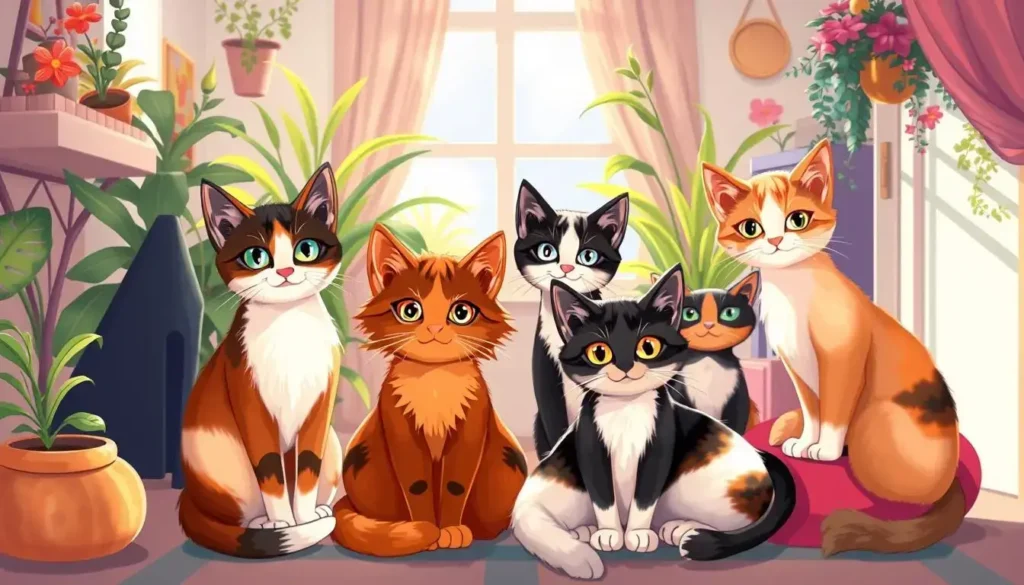
“Chimera cats carry DNA from two separate eggs, while calico cats only have DNA from one egg.”
– Professor Virginia Papaioannou
The Rarity and Value of Chimera Cats
Chimera cats are genuinely unique and known as Legendary pets in Adopt Me. They have striking split-face patterns and a unique genetic makeup. This makes them very rare. They are part of the Halloween 2022 collection, making them even more special.
Market Demand
Chimera cats are highly sought after, just like rare and expensive cat breeds in real life. For example, the Ashera cat can cost up to $125,000. In the US, cat owners spend over $1,200 a year on their pets, showing they’re willing to invest in these unique animals.
Adoption Considerations
Adopting or buying a chimera cat comes with significant responsibilities and costs. The US pet industry spent about $69.4 billion in 2017. Owning a chimera cat can be a big financial commitment. Before bringing one home, it’s essential to learn about their care, grooming, and health needs.
FAQ
What are chimera cats?
Chimera cats are special cats with unique genetic makeup. They have split-face color patterns and other distinct features.
How do chimera cats develop their unique features?
These cats form when two embryos merge early in development. This fusion creates their split-face patterns and unique DNA.
When were chimera cats first discovered and recognized?
The history of finding chimera cats in feline genetics is fascinating. Our understanding of their genetics has grown over time.
What physical traits make chimera cats stand out?
They are known for their split-face color patterns. They can also have different eye colors and unique coat textures.
How can you identify an actual chimera cat?
To spot a chimera cat, look for visual and genetic signs. Genetic tests are vital in confirming their unique DNA.
How do chimera cats differ from regular calico cats?
Chimera cats and calico cats look different. They have different patterns, genetics, and looks. Tests can tell them apart.
What are some common myths and misconceptions about chimeric cats?
Many myths surround chimera cats, like their rarity and behavior. It’s crucial to rely on science to understand them.
What special care do chimera cats require?
They need special grooming and may face health issues due to their genetics. They also have specific dietary needs for their health.
Which famous chimera cats have gained popularity on social media?
Famous chimera cats have won hearts on social media. They show off their unique looks and engage audiences.
How rare are chimera cats, and what is their perceived value in the cat breeding world?
Chimera cats are rare and highly sought after. Their rarity and unique genetics make them valuable in breeding.

